Catecholamines
So let’s take each catechol amine and discuss how it acts.
Norepinephrine
Norepinephrine is selective for alpha receptors and therefore it mainly shows alpha mediated actions. The main action of norepinephrine is to increase blood pressure by vasoconstriction. This vasoconstriction increases peripheral resistance and both systolic and diastolic pressure.
Now let us see the effect of norepinephrine on these parameters. Since the drug shows mainly alpha action systolic blood pressure is greatly increased with only a little increase in diastolic blood pressure.
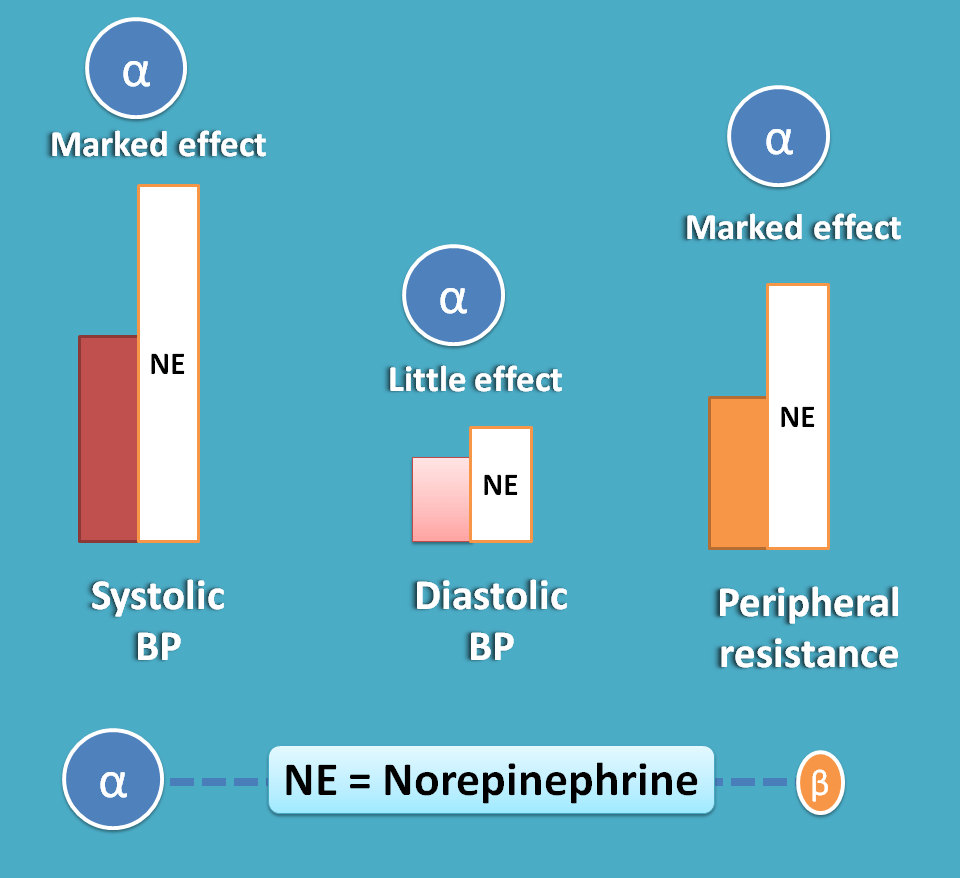
Again due to alpha action peripheral resistance is increased.
Isoproterenol
Quite oppositely, isoproterenol preferentially acts on beta receptors rather than alpha receptors.
Heart
So its main action is on heart through β1 receptors increasing both rate and force of contraction. This also increases cardiac output, cardiac work and cardiac oxygen consumption.
Vascular smooth muscle
It produces only slight increase in systolic blood pressure due to little increase in cardiac output while marked decrease in diastolic pressure due to large beta action.
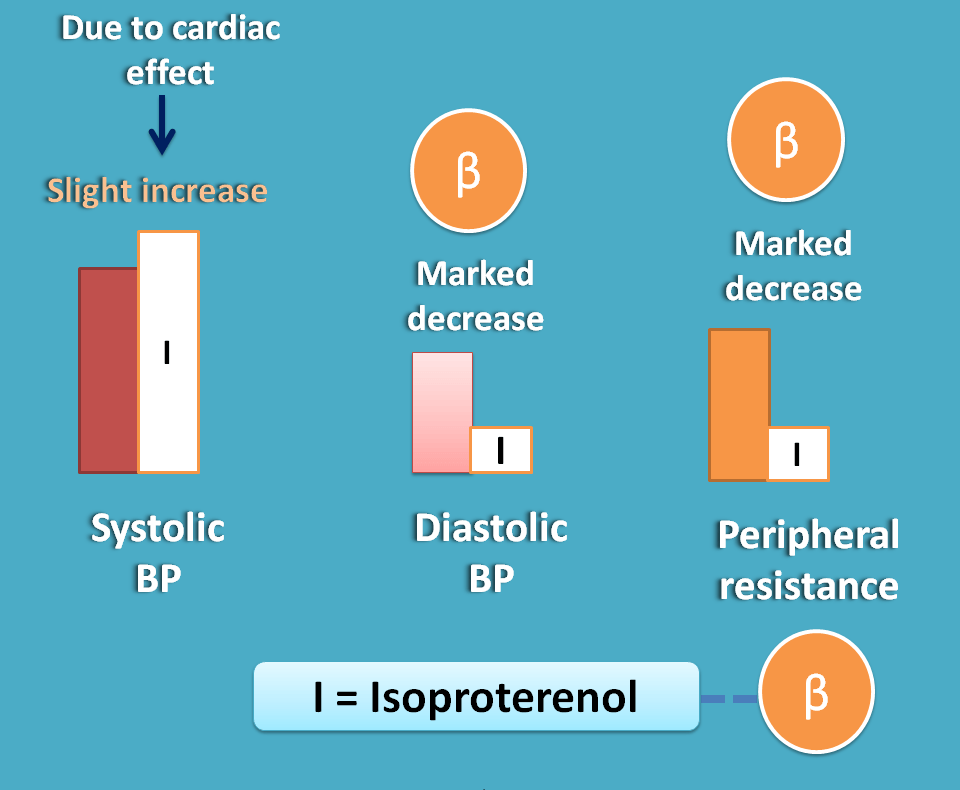
Similarly peripheral resistance is decreased due to large beta action.
Adipose tissue
It increases lipolysis which is less observed at therapeutic doses.
Blood glucose levels
It increases glucose levels by decreasing insulin release and increasing glycogenolysis, again all these effect less observed at normal doses.
Epinephrine
Epinephrine acts on both receptors hence it shows all the effects shown by sympathetic system.
Heart
Just like isoproterenol, it stimulates heart leading to increase in
- Rate and force of contraction
- Cardiac output
- Cardiac oxygen consumption
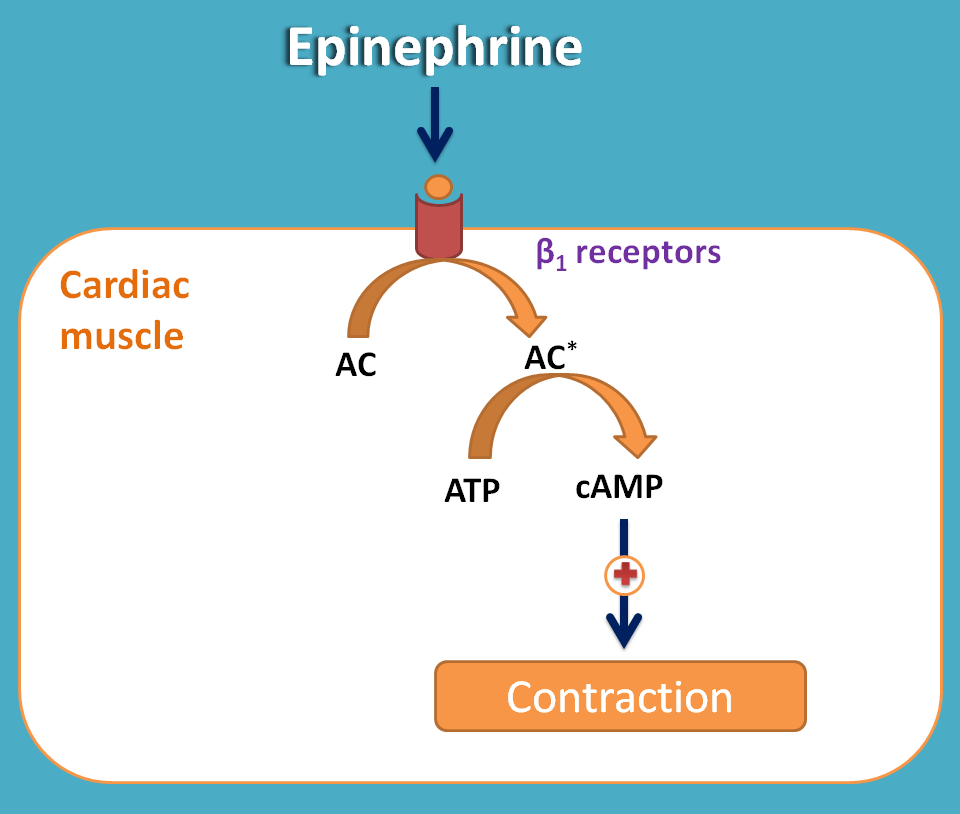
Vascular smooth muscle
Since it acts on both alpha and beta receptors it produces dual actions.
Major systemic blood vessels are constricted by action through α1 receptors and blood vessels supplying to skeletal muscle and liver are dilated through β2 receptors.
Systolic blood pressure is increased by alpha action whereas peripheral resistance and diastolic pressure slightly decrease due beta action.
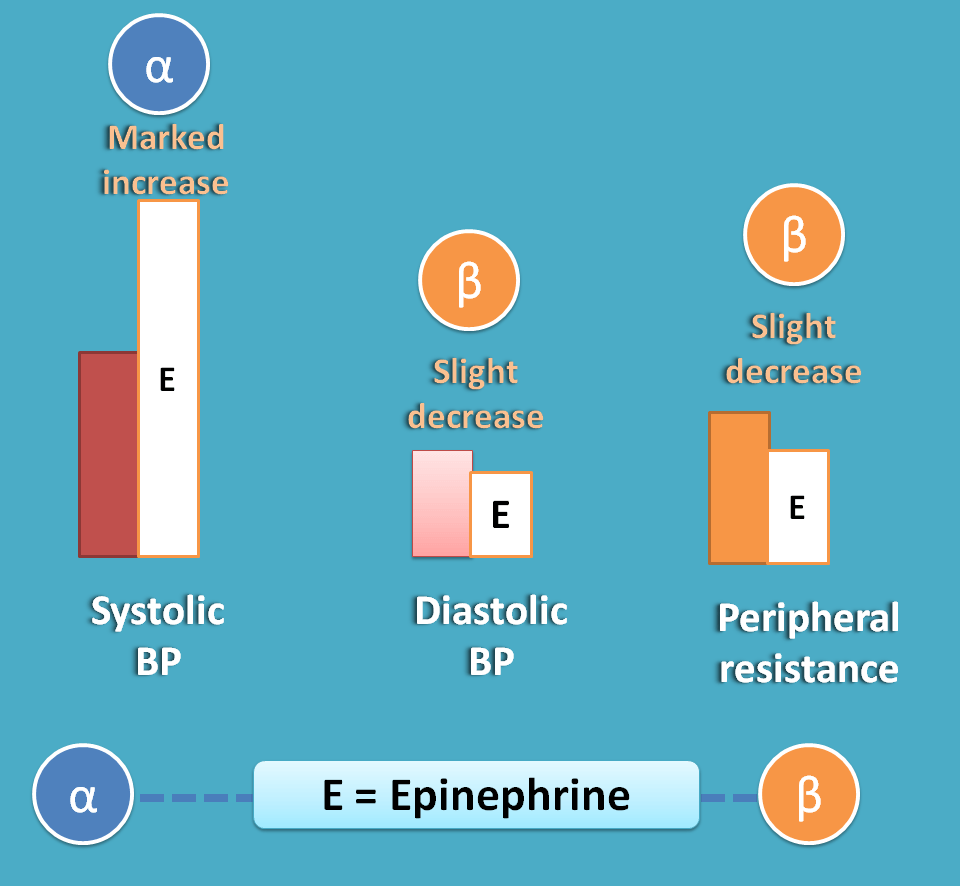
Kidney
It releases renin from kidney.
Liver
It increases glycogenolysis and gluconeogenesis leading to increased blood glucose levels.
Adipose tissue
It increases lipolysis.

Dopamine
Dopamine acts on both adrenergic receptors and dopamine receptors. It produces similar effects like epinephrine by acting through adrenergic receptors such as cardiac stimulation. By acting on dopamine receptors it increases renal blood flow.
As the renal blood flow increase, fenoldapam is a dopamine analogue used in emergency treatment of hypertension.
Side effects of catechol amines
Many of the side effects of these drugs are consequences of sympathetic stimulation.
- Raise in blood pressure
- Headache
- Anxiety
- Tremors
- Tension
- Hemorrhage
- Cardiac arrhythmias
When these drugs are used?
The main indications of catechol amines are
- Cardiac arrest
- Anaphylactic shock
- Adjunct to local Anaesthetics
- Bronchospasm
Cardiac arrest
Cardiac arrest is a condition where heart is suddenly stops functioning with difficulty in breathing and loss of consciousness. As catechol amines stimulate cardiac muscle thereby increase force of contraction and cardiac output, they can be injected to restore the cardiac function. Epinephrine and isoproterenol can be used in this condition.
Anaphylactic shock
Anaphylactic shock is hypotensive response due to any allergic reaction resulting in circulatory collapse. As the blood pressure falls, perfusion pressure decreases resulting poor blood supply to the vital organs like brain. These agents can produce vasoconstriction thereby increase perfusion pressure.
Epinephrine is a drug of choice in this condition. Norepinephrine can also be used in other shock conditions as a vasoconstrictor.
Adjunct to local anesthetic
The duration of local anesthetic depends on how much time it is localized at a particular area where it is applied. As blood flows through the area at high rate, the drug concentration is diluted due to flushing of the drug from the local area. This decreases the duration of action of local anesthetic. So epinephrine is used along with local anesthetic as it produces vasoconstriction and increases the localization of the anesthetic.
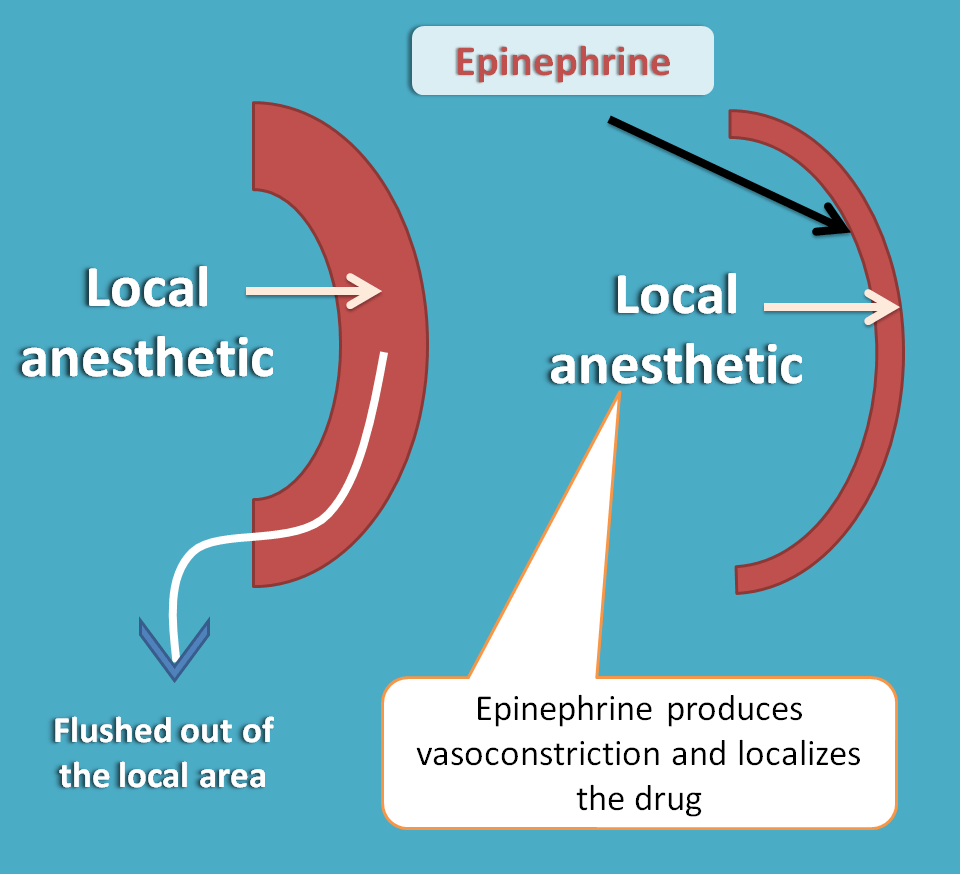
Bronchospasm
Again epinephrine can be used in emergency treatment of bronchospasm such as asthma or shock conditions.
Along with bronchodilatation, the drug can stimulate heart thereby produces palpitations, anxiety, tremor and even arrhythmias. Since the availability of selective β2 agonists like salbutamol, the use of epinephrine for the asthma was declined and today epinephrine is used for acute bronchospasm due to allergic conditions.